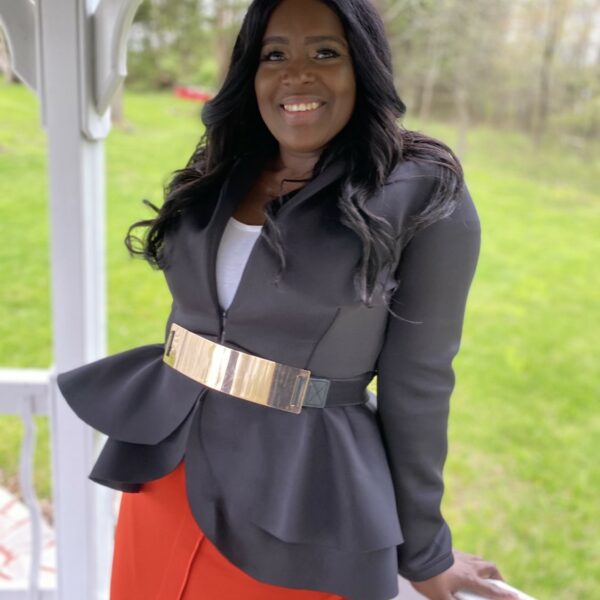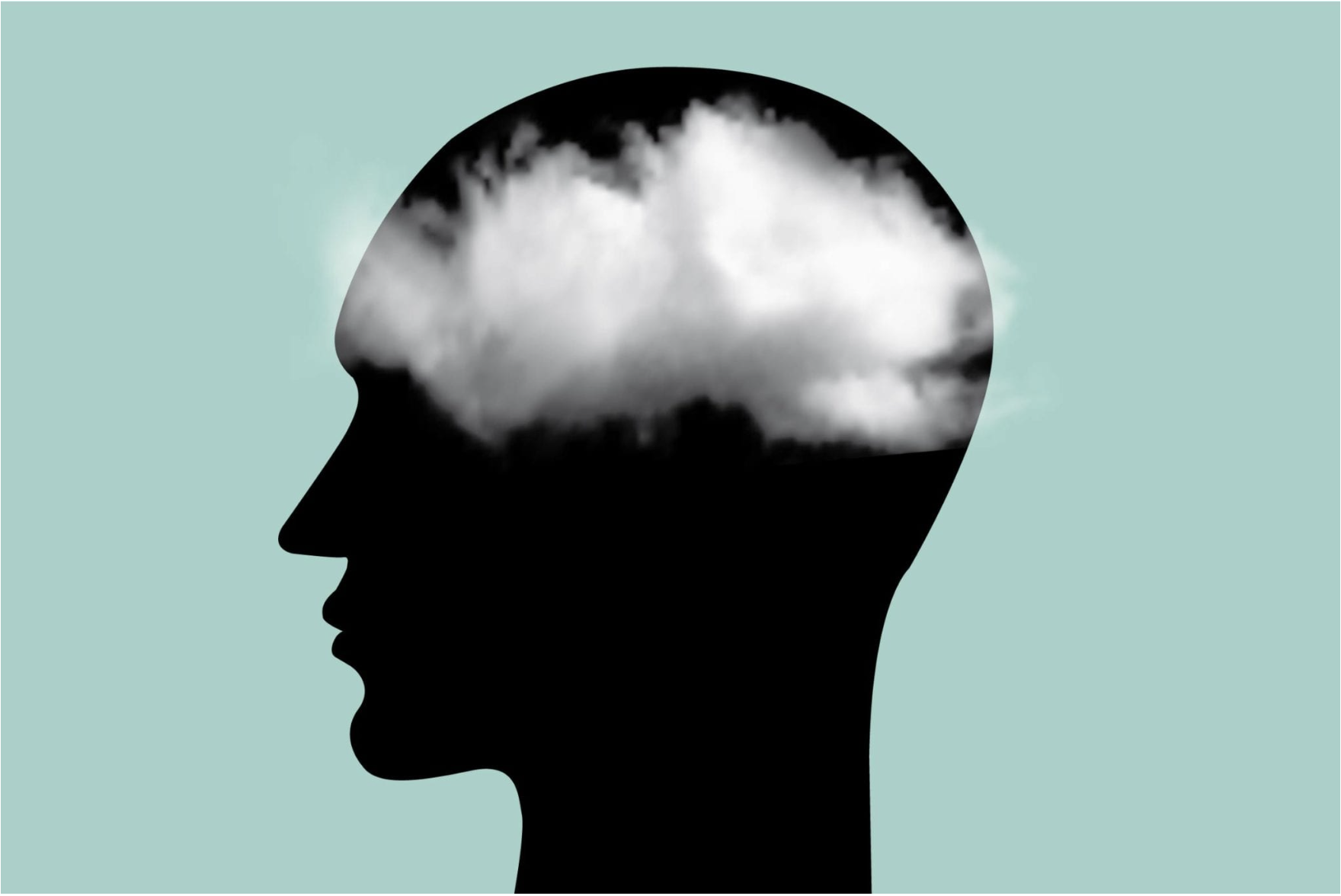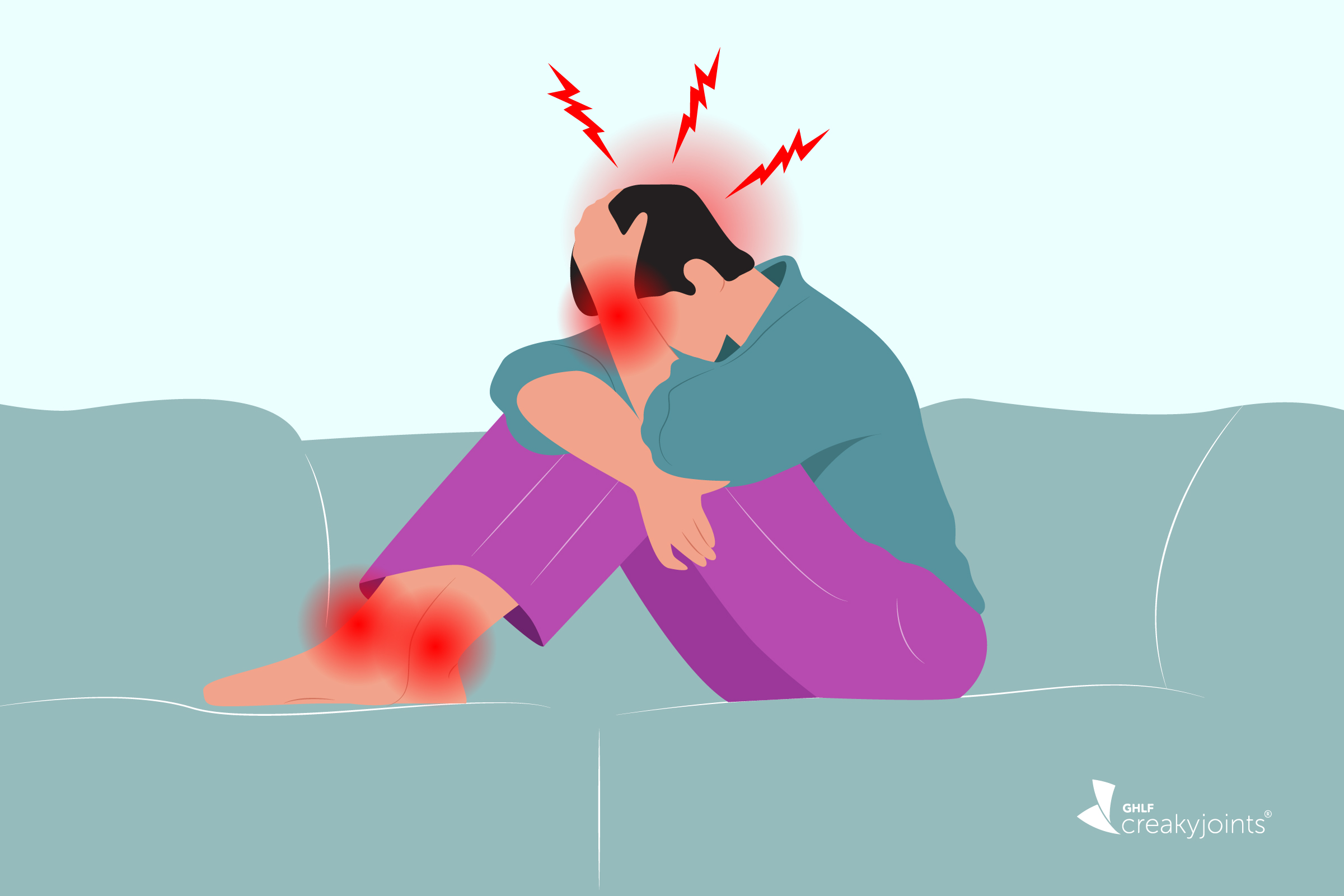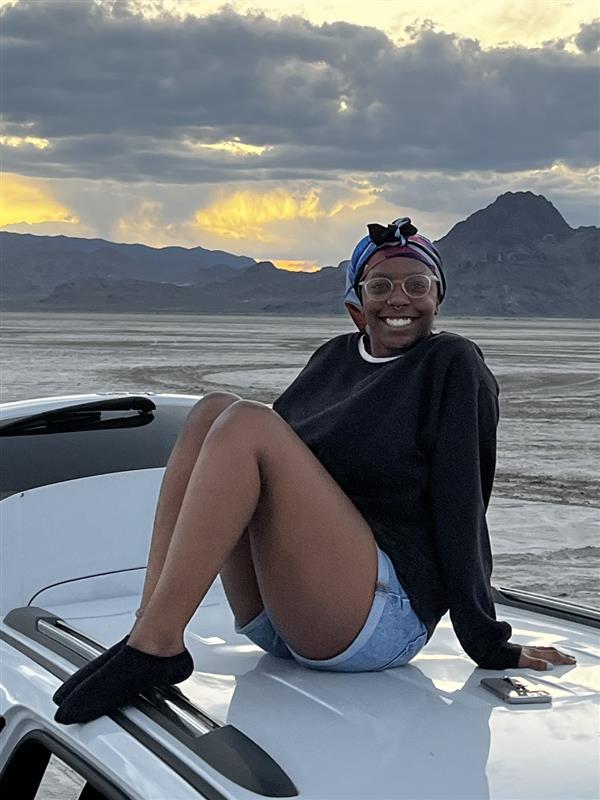Michelle Walters-Johnson: “Don’t Let Alopecia Be the Thing to Beat You — You Beat It!”
Michelle Walters-Johnson: “Don’t Let Alopecia Be the Thing to Beat You — You Beat It”

Michelle Walters-Johnson, 51, is a wife (to husband of 29 years, Stephen), a mother (of Isaac, 23, Michah, 20, and James, 16) and the director of graduate admissions at the University of Baltimore. But since 2018, she’s also been the Lady Behind the Wig, committed to educating, empowering, and supporting other women who, like her, have alopecia.
Although Michelle wasn’t officially diagnosed until 2019, she’d been losing hair for a couple decades. “When I was 28, my parents came to visit my husband and me in Baltimore, and one of the first things my mom said was, ‘Wow! Your hair looks really thin,’ ” remembers Michelle.
At first, she didn’t pay it much mind. She’d started wearing her hair in a straight, sleek style, and figured her mom was reacting to that. “She hadn’t seen me in a long time and was used to me having thick, shoulder-length hair.” But when her hairdresser said the same thing just a few weeks later, she took notice.
Before those remarks, Michelle had noticed bald spots here and there, but she assumed it had something to do with the chemicals her hairdresser used to relax her hair. “I never tried to treat it, and my hairdresser never told me to go to a doctor.”
Plus, she didn’t have a lot of shedding — no hair on her pillow or in the shower. But by the time James was born in 2006, she couldn’t ignore how sparse the hair on top of her head had become. “Every time I washed my hair, I noticed it was getting thinner and thinner. I’d try different things to cover it up and thought I was doing a good job until I’d see myself in a photo.”
At one point, Michelle mentioned the hair loss to her primary care physician, who recommended she stop relaxing her hair. “That was basically like her cursing me,” says Michelle, laughing. “At that time, most African American women my age had not embraced their natural hair. We all wore our hair straight, and I thought I would look crazy with my natural hair. I wanted to fit in.”
“I found a way to boost my confidence.”
Michelle continued trying different hairstyles to cover the bald spots, but when that stopped working, she says she “started to feel the sadness — like this is really happening.” And although she was always laughing and smiling on the outside, inside, she was fighting a private battle: “I struggled with my self-esteem; I didn’t feel confident,” she says. “I found that covering up the hair loss helped me to feel good about myself again, so I started to get weaves and wear half-wigs that cost around $20. At first, I had no idea what wigs to wear — they were old-lady wigs.”
Soon, she started to have fun with it. “Every two weeks I was trying different styles and different colors. I really focused on ‘How do we make this look good? What’s the next hairstyle?’” By 2007, her hair was so thin that weaves were out of the question, so she cut off what remaining hair was on her head. “At that point my hair was an inconvenience to me. I thought, you’re just in my way — let me cut it off.”
“Wigs became an outlet.”
Rather than open up to her family or friends about her hair loss, Michelle focused on covering it up and acting as if it didn’t bother her. “For years, I never let my husband or kids see me without anything on my head,” says Michelle. “If I knew someone was at the door and my head wasn’t covered, I’d start running. Seeing me bald was the equivalent of seeing my naked.”
Wigs became an outlet, a salvation…and eventually something more. “One summer my husband and I went to Las Vegas, and I wanted something special, so I picked out a full wig. He said, ‘Now that looks really good on you; you should try to get more wigs like that.’
“Encouraged, I spent a few hundred on a human hair wig,” recalls Michelle. “It had a lot of versatility, and I wanted more wigs like that, but it wasn’t in my budget, so I learned how to make them myself. I went on YouTube and watched videos, and after making my first wig I was hooked. I would cut them, trim them, style them. I sometimes would be scared to try something, but I’d do it anyway.”
Always “wild,” Michelle would try different colors, including fire engine red and blond. “I used to be opposed to dark-skinned women wearing blond, but I feel like it really brightens me.” Soon people were asking her who did her hair and were shocked to learn she was making and styling her own wigs.
“I went from Luxe Hair by Michelle to Lady Behind the Wig.”
After a layoff in 2015, Michelle tried marketing her wigs under the name Luxe Hair by Michelle. But it was a half-hearted effort: “I underpriced them at $60 and didn’t feel I was worthy. I thought, Why would anyone buy a wig from me? If I can make my own wig, why wouldn’t they do the same?”
Then, in 2018, a revelation: By then, she was working as a graduate admissions counselor at the University of Baltimore, and one night, while walking to her car, she says she “heard the Lord. He told me this is not about selling wigs. He said Luxe Hair by Michelle is focused on wigs, but you’re here to empower and encourage women. That’s your purpose. And that’s when I got the name Lady Behind the Wig.”
In short order, she started her website, ladybehindthewig.com, branched out on social media and let people know her mission was to help others living with alopecia. A year later, she decided to join forces with Jamie Elmore, Founder of the Alopecia Support Group and Editor in chief of Bald Life magazine. But when Jamie learned Michelle had never been diagnosed, she urged her to go to the doctor.
“When they told me I had alopecia and that my hair would never grow back, I felt so lost, like they cut my right arm off, even though I’d been living with it for years,” says Michelle. “The official diagnosis definitely opened up some feelings I didn’t think I had, and I realized it was the reason I needed to speak up and encourage others.”
“Now my focus is on giving tools to others.”
Today, the alopecia community knows that ladybehindthewig.com provides vital resources, such as tips on scalp care for women who opt to shave their hair and Michelle’s initial hair loss kit. “It’s made for the woman who just started losing her hair or has been dealing with alopecia for a while. It talks about getting your mind right.”
For example, she reminds people that their words and thoughts matter. “Let’s change our perspective,” urges Michelle. “Alopecia isn’t happening to you; it’s happening for you. It shouldn’t stop you from living your life, from dating, from having a good relationship. Don’t let alopecia be the thing to beat you — you beat it.”
Tips for Living with Alopecia
Michelle, who is participating in the Global Healthy Living Foundation’s HEROES (Health Education + Reliable Outreach + Empathetic Support) program, which is designed to educate beauty professionals on the challenges faced by people living with scalp and skin conditions, offers more key insights for those living with alopecia:
See a specialist.
Start with your PCP, and ask for a referral to a dermatologist, advises Michelle. You can also ask for a referral to a trichologist, a specialist who focuses on diseases of the hair and scalp. Learn about the type of alopecia you have and your treatment options. “Alopecia happens for many different reasons. For example, it can be the result of an autoimmune disease, be stress related, hereditary, and so on,” explains Michelle. “Rather than pull back and hide, speak to the doctor.”
Have a heart-to-heart with your hairstylist.
“Say, ‘I notice my hair is thinning. Do you have any advice?’ Start there to see what knowledge they have. Those who have been doing research may ask questions like, ‘What are you eating? What’s your lifestyle like?’ You can also ask them outright if they’ve had training on hair loss, and if not, would they consider it. Some hairstylists can help you cover it up, but they don’t know anything about it.”
Consider a doctor who looks like you.
“When I went to the dermatologist in 2019, they assigned me to a young doctor who was German. She said to me, ‘You need to make an appointment with Dr. Crystal Aguh, who is African and knows Black skin and Black hair. Why not meet with someone who looks like you?”
Gain strength from others.
In 2021 on Juneteenth, in Annapolis, MD, Michelle marched in the Bald Boss parade organized by Jamie Elmore. “We were all beautifully made up — about 100 women of all ages. I felt empowered and amazed. Everyone was paying attention to us because we were bald,” says Michelle, who is also part of the Alopecia Queen Movement. “We’ve had virtual prayer calls with women of all races; they pop up with their hair as it is — blotchy, spotty or whatever. You have to exude the warmth and the confidence.”
Do what feels right.
Even though Michelle has marched bald and even did a big bald reveal on social media in 2017, she says she “came to the realization that I love wigs and the creativity of wearing them. I shouldn’t feel bad about that. I want to express myself that way.”
Join GHLF’s HEROES Program
GHLF invites you to make a difference in your community with our FREE and unique program called HEROES (Health Education + Reliable Outreach + Empathetic Support). HEROES is a FREE education and outreach initiative that equips beauty professionals to better support clients living with scalp and other skin conditions and offers people living with skin and scalp conditions helpful resources and information on getting a proper diagnosis, managing symptoms, and becoming an empowered patient. To learn more, visit GHLF.org/HEROES today.




